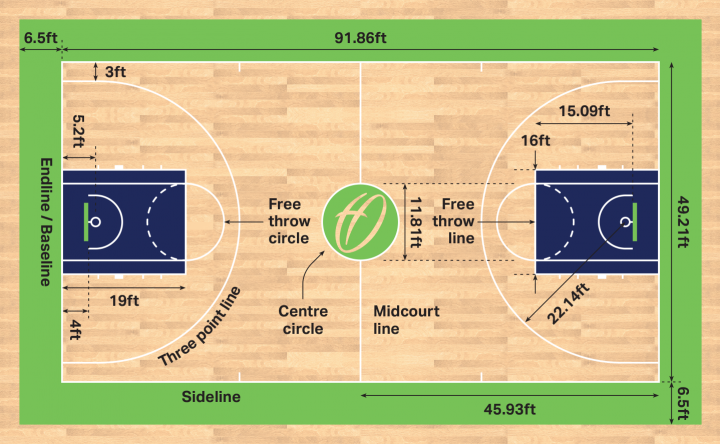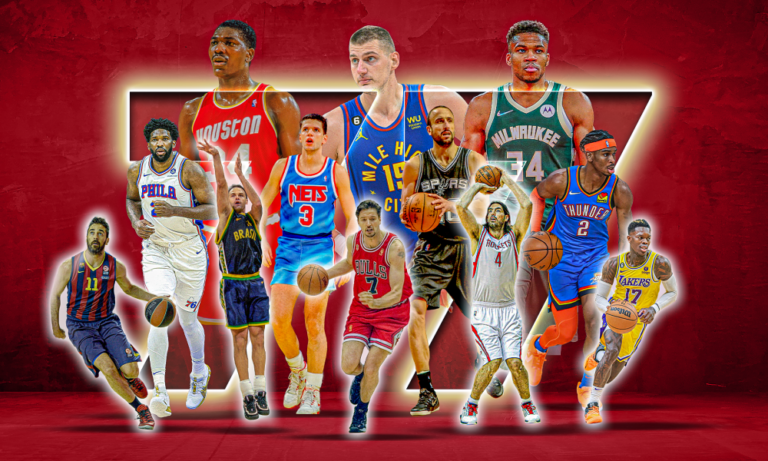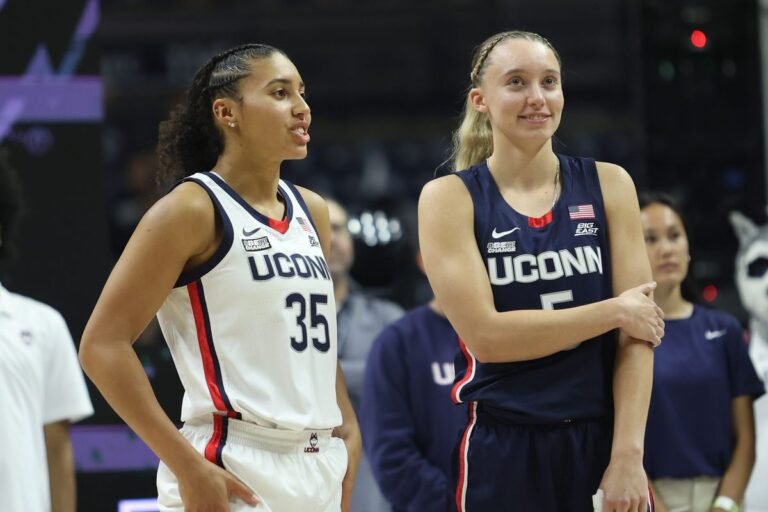What Are the Essential Rules of a Basketball Game?
Basketball is a thrilling and fast-paced sport enjoyed by millions worldwide. Understanding its essential rules is crucial for players, coaches, and fans alike. At its core, a basketball game is played by two teams of five players each, aiming to score points by shooting the ball through the opponent’s hoop.
The game is governed by fundamental rules that make sure fair play and maintain the flow of the game. Key rules include dribbling the ball while moving, adhering to the shot clock, and avoiding fouls such as travelling and double dribbling.
The game is divided into quarters or halves, with specific time limits and regulations for timeouts and substitutions. Mastering these rules enhances the enjoyment and competitiveness of the game.
History of Basketball
Basketball was invented by Dr. James Naismith in December 1891 in Springfield, Massachusetts. Naismith, a physical education instructor, was tasked with creating a new game to keep his students active during the winter months.
He devised a game involving a soccer ball and two peach baskets nailed to the gymnasium’s balcony. The objective was simple: score points by throwing the ball into the opposing team’s basket. The first game of basketball game was played with nine players on each side and a soccer ball. Over time, the rules evolved, and the game became more structured.
The peach baskets were replaced with metal hoops and backboards, and the number of players was reduced to five per team. By 1936, basketball was included in the Olympic Games, further solidifying its popularity and global reach.
Basic Rules of Basketball
Basketball is played on a rectangular court with a hoop at each end. The primary objective is to score points by shooting the ball through the opponent’s hoop while preventing the opposing team from doing the same. Here are some fundamental rules:
- Teams: Each team consists of five players on the court at any given time.
- Game Duration: Professional games typically consist of four quarters, each lasting 12 minutes (NBA) or 10 minutes (FIBA). College games have two 20-minute halves, while high school games have four 8-minute quarters.
- Scoring: Points are scored by making field goals (2 or 3 points) or free throws (1 point).
- Dribbling: Players must dribble the ball while moving. If they stop dribbling, they must pass or shoot.
- Fouls: Physical contact that impedes an opponent’s movement is considered a foul. Accumulating too many fouls can result in free throws for the opposing team.
- Violations: Common violations include travelling (moving without dribbling), double dribbling (dribbling, stopping, and then dribbling again), and shot clock violations (failing to attempt a shot within a specified time. You may know about it here at high point basketball.
Positions in Basketball
Each player on a basketball team has a specific role, typically categorized into five positions:
- Point Guard (PG): Often considered the team’s leader on the court, the point guard is responsible for directing plays, handling the ball, and making strategic decisions. They are usually the best dribblers and passers.
- Shooting Guard (SG): The shooting guard is typically the team’s best shooter, capable of scoring from long distances. They also play a crucial role in defence.
- Small Forward (SF): Versatile and agile, the small forward can score from inside and outside the paint. They are often tasked with guarding the opponent’s best player.
- Power Forward (PF): The power forward plays close to the basket, focusing on rebounding and inside scoring. They need to be strong and aggressive.
- Center (C): Usually the tallest player on the team, the centre plays near the basket, blocking shots, grabbing rebounds, and scoring in the paint.
Strategies and Tactics
Basketball is a game of strategy and quick decision-making. Teams employ various offensive and defensive tactics to gain an advantage over their opponents.
Offensive Strategies
- Pick and Roll: A fundamental play where a player sets a screen (pick) for a teammate handling the ball and then moves (rolls) towards the basket to receive a pass.
- Isolation: A strategy where a player is given space to take on their defender one-on-one, often used for star players.
- Fast Break: Quickly advancing the ball up the court after a defensive rebound or steal to score before the defense can set up.
Defensive Strategies
- Man-to-Man Defense: Each defender is responsible for guarding a specific opponent.
- Zone Defense: Defenders cover specific areas of the court rather than individual players, aiming to disrupt passing lanes and force outside shots.
- Full-Court Press: A high-pressure defense applied throughout the entire court to force turnovers and disrupt the opponent’s offense.
Cultural Impact of Basketball
Basketball has a significant cultural impact, influencing music, fashion, and social movements. The sport has produced global icons like Michael Jordan, LeBron James, and Kobe Bryant, who have transcended the game and become cultural symbols.
Basketball has a strong connection with hip-hop culture. Many NBA players have ventured into music, and hip-hop artists often reference basketball game in their lyrics. The sport has also influenced fashion, with basketball game shoes and jerseys becoming popular streetwear items.
Basketball players have used their platforms to advocate for social change. The NBA has been at the forefront of addressing issues like racial inequality, police brutality, and social justice. Players have organized protests, worn messages on their jerseys, and used their influence to promote positive change. This intersection of basketball game with broader cultural movements highlights the sport’s role beyond the court.
Major Basketball Leagues and Tournaments
Basketball is played at various levels, from local leagues to international competitions. Some of the most prominent leagues and tournaments include:
- NBA (National Basketball Association): The premier professional basketball league in the world, featuring 30 teams from the United States and Canada.
- WNBA (Women’s National Basketball Association): The top professional women’s basketball game league in the United States.
- NCAA (National Collegiate Athletic Association): Governs college basketball in the United States, with the annual March Madness tournament being a major highlight.
- FIBA (International Basketball Federation): Governs international basketball competitions, including the FIBA Basketball World Cup and the Olympic basketball game tournament.
- EuroLeague: The top professional basketball league in Europe, featuring the best teams from various European countries.
How to Get Started with Basketball
If you’re interested in playing basketball, here are some steps to get started:
- Learn the Basics: Familiarize yourself with the rules, positions, and basic skills like dribbling, shooting, and passing.
- Get the Right Equipment: You’ll need a basketball, appropriate footwear, and comfortable athletic clothing.
- Find a Court: Look for local basketball courts, whether at a gym, park, or community center.
- Practice Regularly: Consistent practice is key to improving your skills. Work on shooting, dribbling, and defensive drills.
- Join a Team: Consider joining a local league or recreational team to gain experience and enjoy the social aspects of the game.
- Watch and Learn: Watch professional games to understand advanced strategies and techniques.
Health Benefits of Playing Basketball
Playing basketball offers numerous health benefits, both physical and mental:
- Cardiovascular Health: Basketball is an excellent cardiovascular workout, improving heart health and endurance.
- Strength and Flexibility: The sport involves various movements that enhance muscle strength and flexibility.
- Coordination and Balance: Dribbling, shooting, and passing require good hand-eye coordination and balance.
- Mental Health: Playing basketball game can reduce stress, improve mood, and boost self-esteem.
- Social Interaction: Being part of a team fosters camaraderie, communication, and teamwork skills.
These health benefits make basketball an excellent choice for individuals seeking to stay active and improve their overall well-being. Read more about it here at Hofstra Basketball.
Famous Basketball Players
Basketball has produced many legendary players who have left an indelible mark on the sport. Some of the most famous players include:
- Michael Jordan: Widely regarded as the greatest basketball game player of all time, Jordan led the Chicago Bulls to six NBA championships and earned five MVP awards.
- LeBron James: Known for his versatility and basketball IQ, LeBron has won four NBA championships and continues to be a dominant force in the league.
- Kobe Bryant: A prolific scorer and fierce competitor, Kobe won five NBA championships with the Los Angeles Lakers and inspired countless players worldwide.
- Magic Johnson: Renowned for his exceptional passing and leadership, Magic led the Los Angeles Lakers to five NBA championships.
- Larry Bird: A sharpshooter and fierce competitor, Bird won three NBA championships with the Boston Celtics and is considered one of the greatest forwards in history.
Conclusion
Basketball game is more than just a sport; it’s a global phenomenon that brings people together, promotes physical fitness, and inspires millions. Whether you’re playing on a local court, watching a professional game, or simply enjoying a casual shootaround, basketball offers endless opportunities for fun, competition, and personal growth.
Understanding the game’s history, rules, positions, strategies, and cultural impact, you can deepen your connection to this beloved sport. Embrace the game, participate actively, and enjoy all the benefits that basketball has to offer.







